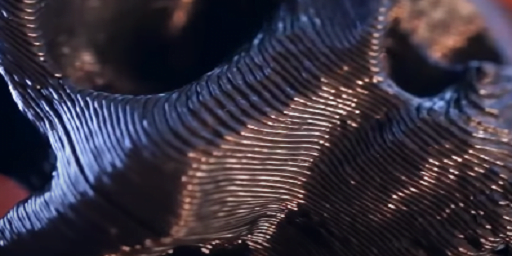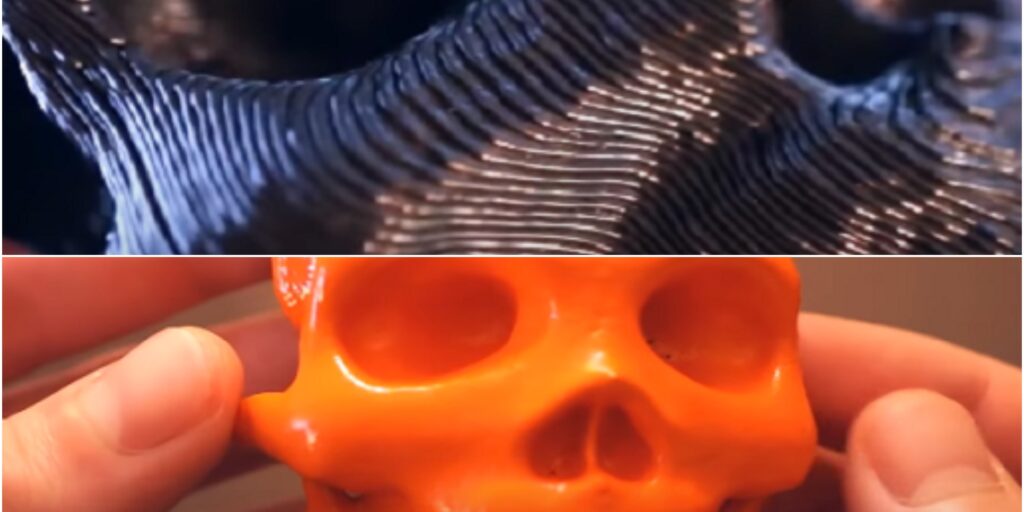Today we are going to address a very common problem associated with FDM 3D printing i.e. Rough print or stepping of material. There are many solutions to this problem and a common term used for them is “PLA Smoothing”. The most common type of 3D printing we all perform is FDM (Fuse Deposition Modeling).
Let’s first see that why 3D printing is generally termed FDM printing. In FDM printing each layer of plastic (filament) melts into thin slices and is placed one above another to form a structure.
While standing vertically it has a curve or circular surface that is very minutely noticeable. But, these minute curves form step-like formations which when touched feel irregular. There are many different solutions for this common problem, some of the easy ones are mentioned in this post on PLA smoothing.

PLA Smoothing
Some Common approaches
One of the most common solutions that come to everyone’s mind is that print layers small. But, with very small layers the time of printing will greatly increase. The longer time of the printing gives greater chances of printing problems. Problems like warping of material, jamming of filament, power failure, etc.
Another option would be to print with a special plastic called ABS (Acrylonitrile Butadiene Styrene). ABS has the distinctive property of melting in presence of acetone vapors. Some problems with this method are that Acetone vapors need to be heated, they are also toxic and flammable.

Finding the exact amount of acetone to produce enough vapor is very to smoothen the surface is difficult to detect. If you have a little bit extra it could melt the whole filament. Shown in the picture below.

ABS also has characteristics of shrinking when cooled. This cooling tendency results in common warping and peeling of material from heat bed while 3D printing.
PLA Smoothing
Safer filament
A safer and more common filament known as PLA (Polylactic Acid or Polylactide). It is derived from sugarcane and is favored because of its biodegradable properties. The only downside of the PLA is that it does not have any melting properties like ABS in presence of any type of fumes.
Let me tell you in brief how I do ABS smoothing and try to do PLA smoothing. Firstly, 3D print is to be kept in a sealed container filled with acetone mist. Acetone interacts with ABS and melts the plastic in a slow and controlled manner to form a super smooth model.
Note: If you decide to try this, be sure to familiarize yourself with the necessary safety precautions.
Unfortunately, you cannot perform the same process on PLA because it does not interact with acetone in the same way. Some other chemicals will do the same but they are difficult to obtain and they are very dangerous and toxic to use.
Below are some of our free STL files which you can download instantly.
These products are on YouTube also and there are designated blogs for all of them.
PLA Smoothing
Unconventional Method
Note: This method is first shown on a YouTube channel 3DSage, we tried it and found useful. Thus, we are sharing it for educational purpose.
We used a mixture of any color spray paint that bond’s well to plastic and fast-drying polyurethane. We start by spraying a slightly more than normal layer of spray paint and then quickly spray a layer of fast-drying polyurethane. Then we immediately place the model under a fan to speed up the drying time. It also prevents the mixture from forming running or flowing patterns on slopes or curves.

So what happens is that the paint and polyurethane will combine and thicken. Then part it under the fan and fill in the layered gaps. For best results, we did this in several thin layers wait about 20 minutes between each layer to dry. Then await a full day before adding the final coat of spray paint to cover up any discoloration.
The benefit of using this method is that the end result is smooth. We got this result without any harsh chemicals or sanding. You can print whatever filament color you have and then paint the final model. You can also print in larger layer heights to decrease the printing time and it can fill in small holes or cover up printing flaws.

PLA Smoothing
Self-smoothing filament
The best-known filament is from ‘polymaker’ company. Which unveiled its own smoothing solution called PolyShar. Using its own formulation of a PLA-like filament, the 3D print is landed in a sealed chamber where the isopropyl alcohol is atomized, causing a haze around the object.
The 3D print rotates in alcohol mist, which reacts with it to melt the plastic. The longer the process, the smoother the print. The surface will become sticky when it comes out of the polysher, so it is best to let it sit for about half an hour before handing it over. Doing this also improves the final appearance, which may not look as comfortable as you would expect in the first place.
PLA Smoothing FAQ
Does Etsabi produce poisonous smoke?
Due to Sugarcane decomposable Etsabi produces less toxic fumes and does not shrink resulting in fewer warships PLA has many benefits but a downside is that easily accessible chemicals have ABS like acetone.
Is paint spray used to smooth PLA and filament?
Our experts shared the test with us and reported that the smooth PLA or any filament can actually be smoothed with a mixture of any paint spray to remove stair-step edges.
We hope that you have found this article on “PLA Smoothing” helpful. Try these tricks at home on your own prints and tell us your experiences.












